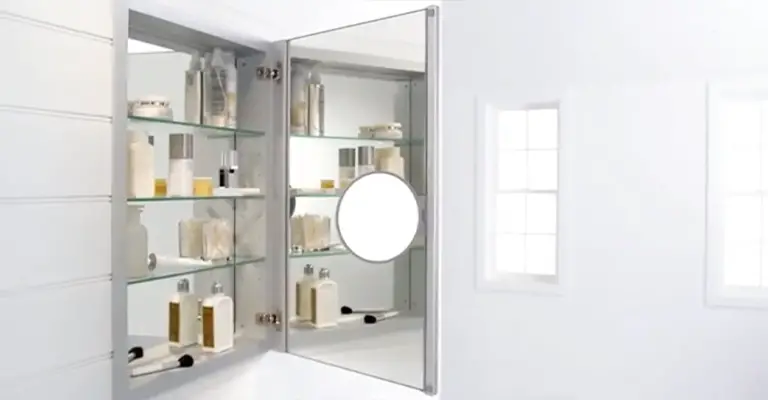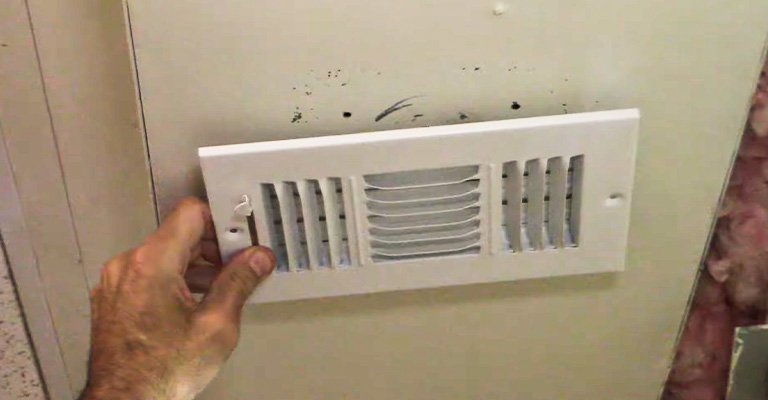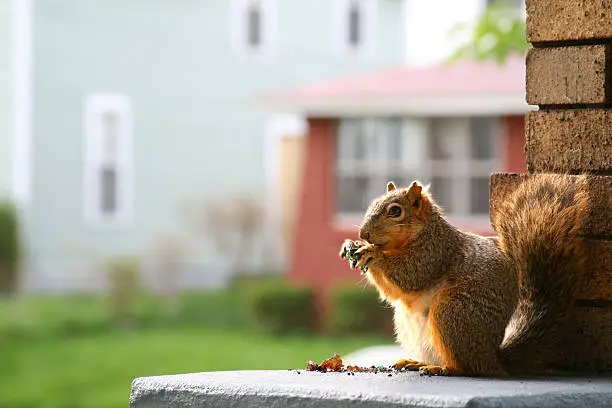How do You Stop Sliding Glass Door from Leaking?
Water leakage is a common problem faced by sliding door owners. It is the result of some other issues. If you notice water leakage from your sliding door then you should find out the reason behind it.
You know, solving a problem becomes easier once you know the root of the problem. So, let’s check what is causing leakage of your sliding door so that you can stop it properly.
7 Common Reasons Behind Sliding Glass Door Leakage
We have researched the common causes of sliding glass door leakage and found the 7 most common reasons behind this problem. You can solve some of the issues on your own and some issues require professional help.
1. Dirty Door Track
To find out the reason behind the leakage of the sliding glass door the first step is to check the cleanliness of the door track. Because building up dirt and debris between the tracks break the seal between the bottom of the door track and the door itself. It causes misalignment of the door resulting in water intrusion.
If you find the door track dirty take the following measures:
How to Clean Dirty Door Track?
You need a vacuum cleaner to clean the dirt from the door track. Open the door and clean the dirt and debris using the vacuum cleaner. If there are any larger pieces of dirt and debris it is better to remove them with hand first to make the rest of the work easier for the vacuum attachment.
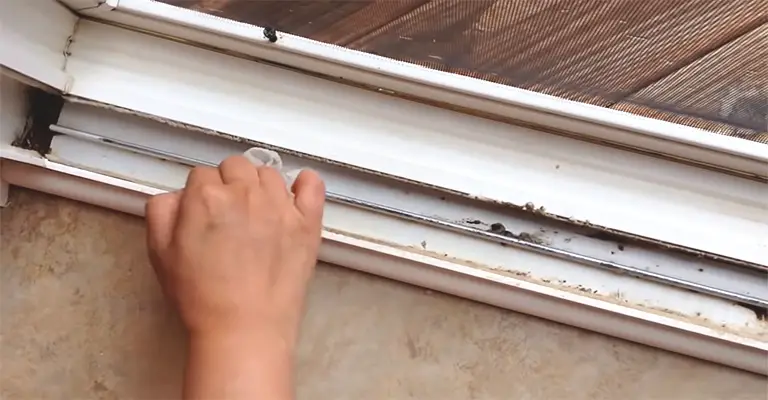
Then make a cleaning solution by mixing a few drops of non-abrasive cleaner with 1 cup of water. Then dip a wire brush or an unused toothbrush into the cleaning solution and scrub the tracks.
After scrubbing, wipe down the track with a soft rag and let it dry. If there is any stubborn dirt then you can use baking soda and vinegar mixture as a cleaning solution.
2. Broken or Worn Tracks
The tracks may wear, get rusted, or broken resulting in water intrusion during the rainy season. A common sign of worn track is scraping sound. If you hear a scraping sound during sliding the door that means the track is getting stripped.
If this is the case, take the following measures:
What to Do if the Sliding Door Tracks are Broken or Worn Down?
If the sliding door tracks are broken or worn down then you should remove both the stationary and sliding doors completely and replace the worn part with a brand new one.
3. Misaligned or broken Rollers
Water leakage can cause by misaligned or broken rollers too. If you notice that the door needs more tension to slide open and close, then it may be the result of misaligned rollers.
You can confirm it by checking the gap between the door and the frame. If the gap at the top of your door is wider or skinnier than the gap at the bottom then the rollers are misaligned and you need to fix it.
How to Fix Misaligned or Broken Rollers?
You need either a flathead screwdriver or a Phillips-head screwdriver to fix the misaligned rollers. It depends on the type of screw used.
You will find the adjustment screws on the lower edges of the door. If you cannot find the screws there, then it may be sealed with plugs of the same color.
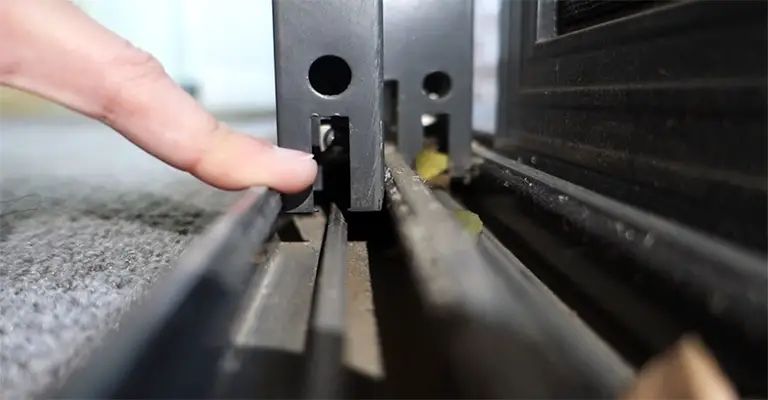
Take the screwdriver and rotate the screws counterclockwise to raise them. If you want to lower them then rotate the screws clockwise. Keep doing this until you find that the door is moving smoothly.
But if the rollers are broken then you must replace that with new rollers.
4. Blocked Weep Holes
Many modern sliding doors come with built-in weep holes to drain water from the base of the track. Weep holes can easily get blocked with caulking or debris during installation.
How to Fix Clogged Weep Holes?
Find out the location of the weep hole and check if paint, caulking, or other debris block it. If it is blocked then clean it and the problem is solved.
If you face difficulty finding out the location of the weep holes checks the model number of your sliding door. You will find details about the location of the weep holes using the model number of the door.
5. Broken Door Flash
If the door sits flush with the ground or patio and water frequently flows past the base then there should be a line of metal flashing to redirect water away from the house. Sometimes this flashing becomes dented and trouble occurs during draining water.
The door may also have a flash above the frame. If it is not installed properly or if it is bumped by a tree branch water leakage may occur firstly from the side of your home and eventually through the frame.
How to Fix Broken Door Flash?
Replacing sliding door flash is a complicated job. So, it is wise to take help from professionals if the broken flash is the reason behind water leakage.
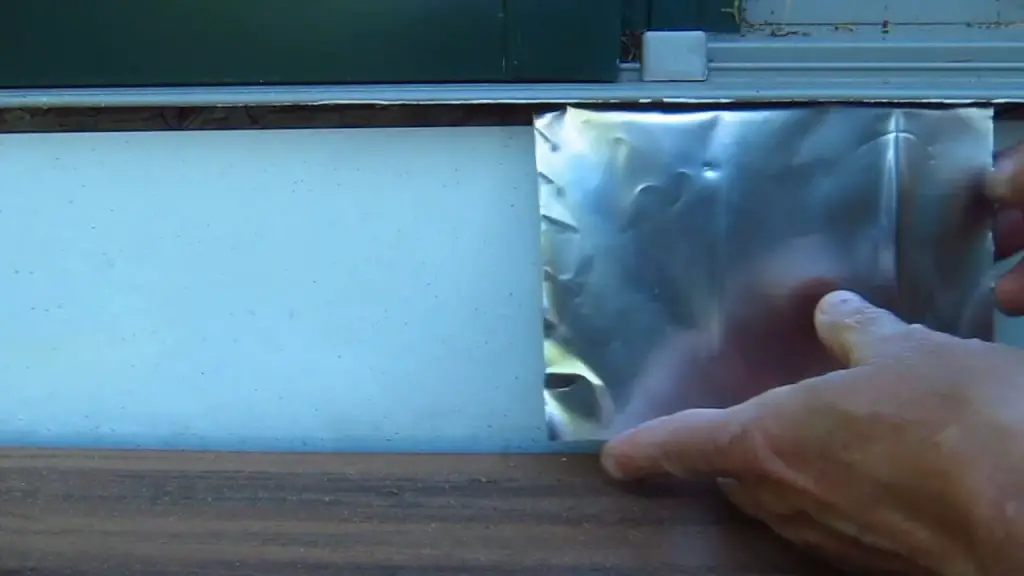
6. Unsealed Glass
If you notice that the hose test is sending water creeping through the top or side of the glass then maybe the glass has become unsealed. Improper installation, severe weather damage may cause this problem. However, the best lubricant for sliding glass doors can easily protect your door from corrosion.
How to Fix Unsealed Glass?
It is wise to call the sliding door professionals to solve the problem.
7. Worn Out Weatherstripping
Weatherstripping is a thick foam tape or a rubber tube that latches onto the bottom of the door. If the weatherstripping is worn out with time then water leakage may occur.
How to Fix Worn Out Weatherstripping?
If the water leakage is caused by worn-out weatherstripping you have to replace the worn-out weatherstripping with a new one to stop the sliding door from leakage.
Final Words
Proper installation, keeping the door, its track and roller clean, and regular maintenance is enough to get a trouble-free service from the sliding door. If you ever notice a little water leakage from the sliding door, please don’t ignore it so that you can solve the problem by spending less money, effort, and time.
If you ignore the problem and let it become bigger then you may end up suffering and spending a lot. All the 7 common causes of sliding door leakage are enlisted in this article. Your task is to identify the issue and to take action accordingly to stop the sliding door from water leakage.

